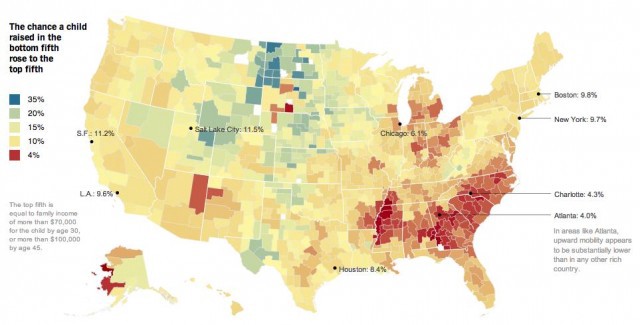Where You Are More Likely to Rise Out of Poverty

The researchers concluded that larger tax credits for the poor and higher taxes on the affluent seemed to improve income mobility only slightly. The economists also found only modest or no correlation between mobility and the number of local colleges and their tuition rates or between mobility and the amount of extreme wealth in a region.
But the researchers identified four broad factors that appeared to affect income mobility, including the size and dispersion of the local middle class. All else being equal, upward mobility tended to be higher in metropolitan areas where poor families were more dispersed among mixed-income neighborhoods.
Income mobility was also higher in areas with more two-parent households, better elementary schools and high schools, and more civic engagement, including membership in religious and community groups.
The New York Times has a fascinating study based on millions of anonymous earnings records around the country showing the metropolitan areas in the U.S. where low-income families have a higher chance of climbing the income ladder and rising out of poverty. The study showed that living in cities with mixed-income neighborhoods encouraged this kind of income mobility, as well as, unsurprisingly, living in cities with good school systems. The story is filled with really nice interactive charts, which you can see here.
Support The Billfold
The Billfold continues to exist thanks to support from our readers. Help us continue to do our work by making a monthly pledge on Patreon or a one-time-only contribution through PayPal.
Comments